
This month’s amazing 82 page Tudor Life magazine is a wonderful look at the Seymour family and their remarkable journey, both in royal history and in popular culture.
[Read More...]
This month’s amazing 82 page Tudor Life magazine is a wonderful look at the Seymour family and their remarkable journey, both in royal history and in popular culture.
[Read More...]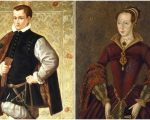
On this day in history, 25th May 1553, Lady Jane Grey and Lord Guildford Dudley got married at Durham place in London.
In the same letter to the Emperor in which de described Edward VI as “wasting away daily”, Jehan Scheyfve recorded the marriage of Jane and Guildford:
“On the 25th of this month were celebrated the weddings of my Lord Guilford, son of the Duke of Northumberland, to the eldest daughter of the Duke of Suffolk; of the Earl of Pembroke’s son to the second daughter; and of the Earl of Huntingdon’s son to the daughter of the Duke of Northumberland. The weddings were celebrated with great magnificence and feasting at the Duke of Northumberland’s house in town.”
[Read More...]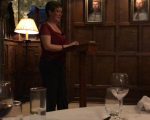
As you know, I’ve just been leading the Anne Boleyn Experience Tour with Philippa Brewell of British History Tours and as well as being the resident historian on the tour, answering questions on Anne Boleyn and Tudor history, I also did a talk on the other victims of May 1536, i.e. the five men who were executed, the two men who were imprisoned and released, and the families left behind.
[Read More...]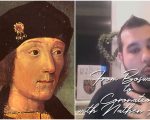
Nathen Amin was a big hit when he spoke to us last year on Henry VII’s ‘journey’ to Bosworth, i.e. his early life and time in exile, so we got him back for the next instalment of Henry VII’s life. You can view Nathen’s excellent video talk “Henry VII: Bosworth to Coronation” by clicking here.
Nathen will be joining us in the Tudor Society chatroom tomorrow (Friday 25th May) to answer your questions on his talk, his research and anything Henry VII related. Our last live chat with Nathen was brilliant, so this one is bound to be! Please do join us. Here are the times in different time zones:
[Read More...]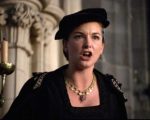
On this day in history, 24th May 1546, letters were sent from Privy Council to Anne Askew (future Protestant martyr) and her estranged husband Thomas Kyme, ordering them to appear in front of the council:
“Two of the Yeomen of the Chamber were sent to apprehende Sir Robert Wesdom, prest, and had with them letters to oone Kyme and his wief for their apparance within x dayes after receipt.”
“Kyme” was Thomas Kyme, Anne Askew’s husband.
[Read More...]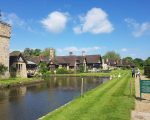
Apologies for not writing this sooner but I was travelling. So, what did day 5 bring?
The day started with the usual delicious Hever Castle breakfast. I haven’t mentioned the food, I don’t think, but it was out of this world. The chef at Hever went out of his way to help with our dietary requirements (vegetarians, vegans and some serious food allergies) and every dish was divine. There was so much choice for breakfast (hot and cold) that I am finding it very hard to come back down to earth here at home. I want my halloumi and avocado on a toasted English muffin with grilled tomato! Where is it? Oh dear!
Over breakfast, we took the opportunity to pass around our special Anne Boleyn Experience books which had pages at the back for autographs, messages and addresses. Whenever I feel blue, I will take out my book and read the special messages from people who I now count as good friends. Then, unfortunately, it was time to do last minute packing and to have a last wander around the gardens.
[Read More...]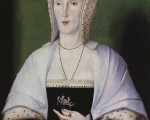

The Anne Boleyn Experience Day 4 tied in with the anniversary of the execution of Queen Anne Boleyn on 19th May 1536 and it was a fitting day to spend at the Tower of London and to be staying at Hever Castle, the Boleyn family home.
On arrival at the Tower of London, we split into two groups and were then guided around the Tower by two fantastic Blue Badge Guides. After that, we had free time to grab lunch, see the White Tower, Beauchamp Tower, shop etc. Most of us also watched the performance on the South Lawn called “The Last Days of Anne Boleyn”, which was excellent. I’ll tell you more when I get home. We also laid roses with a card on the glass memorial. I decided to do this rather than have a Yeoman Warder lay them on Anne’s tile because I wanted tourists who didn’t know the importance of the date to see them and read it.
[Read More...]
This week’s Sunday puzzle is a crossword on the “on this day in history” events of the month of May in the Tudor period. Test your knowledge and have some Tudor fun with this crossword – good luck!
Hint: all the answers are on this website somewhere!
Click on the link or picture below to open the crossword and print out.
[Read More...]
Hello! Apologies for not posting this yesterday, but it was a very busy day and I was just too tired to write this in the early hours of this morning.
We are having a fantastic time. Lots of “pinch me, am I really here?” moments. Yesterday, after a delicious breakfast, we made our way by coach to Hampton Court Palace, that stunning Renaissance-style palace that Henry VIII pretty much stole from Cardinal Wolsey. OK, Wolsey gave it to him, but what do you say when the king notices that your palace is way better than any of his?!
[Read More...]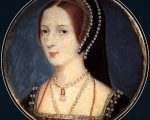
In this week’s Claire Chats video talk, I look at a few more myths that surround Anne Boleyn, second wife of King Henry VIII, and challenge them. Please do share your thoughts and any other myths that you have come across.
[Read More...]
After a night of not much sleep at all – I was too excited to sleep! – we enjoyed a lovely breakfast in the Astor Wing of Hever Castle before having free time to enjoy the gardens and castle. I love walking through the gardens before the public arrives because I can pretend that I am the lady of the manor.
The gardens just cannot be described in words. I cannot do them justice. They are breathtakingly beautiful. I did a couple of Facebook Live videos from the gardens and I hope my excitement and pure joy shone through, I was very excited. Then, I got even more excited because I visited the Hever Castle gift shop to find a display of my books. The staff were kind enough to allow me to take lots of selfies with my books. I also signed the copies they had so that they could sell them as signed copies. Seeing my books on sale in the shop of the Boleyn family home was truly a dream come true, one of those “pinch me” moments.
[Read More...]
It’s 1.15am as I write this, that’s how much fun I’m having. I’m buzzing! Let me tell you all about my day.
I travelled to London Victoria this morning and after having a Marks and Spencer’s lunch, I met up with my fellow tour guide, Philippa, and tour participant, Jodee, before meeting the rest of the group near Victoria. We then had fun [sarcasm] fighting our way through London traffic on the coach before reaching the lovely tree-lined lanes of Kent, aptly named the Garden of England. I would not want to be a coach driver navigating my way down those lanes!
We arrived at Hever Castle [a squeal of excitement might have come out of my mouth at this point] and were shown to our beautiful rooms, each one uniquely furnished and decorated. They are lovely. You can just see the upper part of the castle through my leaded windows. We had time to freshen up before meeting for pre-dinner drinks. We then had a delicious barbecue. I’m a vegetarian and my quinoa burgers were to die for, so good! And the salad bar was great.
[Read More...]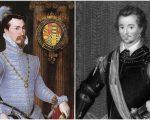
Douglas Sheffield, née Howard, was the oldest daughter of William Howard, 1st Baron Howard of Effingham, Surrey, and his wife, Margaret Gamage. Her date of birth has been a source of debate among historians. However, Simon Adams has argued that the dates of 1542 and 1543 are the most likely due to her being seventeen upon her marriage in 1560. Her older brother was Charles Howard, 2nd Baron of Effingham and 1st Earl of Nottingham. Charles was a successful English statesman and Lord High Admiral under Elizabeth I and James I. Commander of the English forces, he was hugely influential during the Armada period and was renowned for having been a significant figure in the naval defence against Spanish invasion during the 1590s. Douglas was part of a distinguished and notorious noble family that had been instrumental in court politics since the early sixteenth century. While her father held the title of baron, his half-brother was the Duke of Norfolk, William enjoyed a successful career under all four of the Tudor monarchs, and this favour ensured his daughter made a good marriage; Douglas married John Sheffield, 2nd Baron Sheffield. The couple had two surviving children: Edmund Sheffield, later 1st Earl of Mulgrave, and a daughter, Elizabeth, who married Thomas Butler, 10th Earl of Ormonde. The newly married couple were received well by the queen, who provided a wedding gift on 27th October 1560.
[Read More...]
Hello everyone, I hope you’ve had a good start to the week. I’m just taking a break from running around the house like a headless chicken to write this. I’m trying to pack while leaving Tim and the kids instructions for what to do while I’m away, and trying to prevent dogs and cats from curling up in my suitcase! Aaaaggghhh!
Anyway, I leave home tomorrow as I’m meeting up with Philippa, from British History Tours, and our group of Anne Boleyn Experience participants in London on Wednesday afternoon. This tour is running in association with the Tudor Society, so each day of the tour (16th-20th May) – WiFi willing! – I’m going to post a diary entry here on the Tudor Society. I know that for some of you visiting the UK is a real bucket list item, so you can live vicariously through me!
As well as the diary entries, I’m hoping to share photos on Instagram (tudor.society) and to also do some Facebook Live videos on the Tudor Society Facebook page, so do keep an eye on our social media too.
I’m so very excited. I love Hever Castle and to be staying there again will be wonderful.
[Read More...]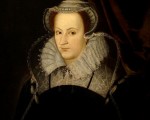
14 May:
1511 – Death of Walter Fitzsimmons, Archbishop of Dublin and Lord Deputy of Ireland, at Finglas, Dublin. He was buried in the nave of St Patrick’s Cathedral.
1523 – Death of Nicholas Vaux, 1st Baron Vaux, courtier and soldier, at the Hospital of the Knights of St John of Jerusalem in Clerkenwell.
1571 – Matthew Stewart, Earl of Lennox and regent to James VI, held the “Creeping Parliament”.
1595 – Death of Anne Fiennes (née Sackville), Lady Dacre, at Chelsea. She was buried in the More Chapel, Chelsea, next to her husband, Gregory Fiennes, 10th Baron Dacre.
1629 – Death of Jean Gordon, Countess of Bothwell and Sutherland. She is known for having been married, albeit briefly, to James Hepburn, 4th Earl of Bothwell, who went on to marry Mary, Queen of Scots. In 1573 she married Alexander Gordon, 12th Earl of Sutherland, and after his death she married Alexander Ogilvy of Boyne, the man she had been in love with before she married Bothwell.
1635 – Burial of Helena Gorges (née Snakenborg), Lady Gorges, in Salisbury Cathedral. Helena was married twice, firstly to William Parr, Marquis of Northampton (brother of Catherine Parr), and secondly to Sir Thomas Gorges, courtier.

As we’re nearing the anniversary of the execution of Queen Anne Boleyn, I thought I’d choose her as the topic of this week’s quiz. Grab your favourite beverage and snack, get that thinking cap on and let’s test your knowledge of this famous Tudor queen!
[Read More...]
As it is nearing the anniversary of Anne Boleyn’s execution, our informal live chat is on Anne Boleyn this month AND I’m getting ready to go on the Anne Boleyn Experience Tour, I thought I’d talk about some of the most prevailing myths that surround the second wife of Henry VIII. These are the myths that I am challenging and correcting on a regular basis.
Here is Part 1 and I will be looking at a few more next week.
[Read More...]
William Herbert, 1st Earl of Pembroke, soldier and magnate and a man who served four monarchs, was the second son of Sir Richard Herbert of Ewyas (the illegitimate son of William Herbert, 1st Earl of Pembroke, of the 8th creation) and his wife, Margaret, daughter of Sir Matthew Cradock of Swansea. Richard served King Henry VII as a gentleman usher. Very little is known of Herbert’s early life, only that he lost his father in 1510 and was then brought up by his mother and her third husband, William Bawdrip.
In 1514, Herbert entered the service of Charles Somerset, Earl of Worcester, who was married to Herbert’s half-uncle’s daughter. John Aubrey recorded that William Herbert was known as ‘Black Will Herbert’ and that he was ‘a mad fighting fellow’. Aubrey also recorded that Herbert was illiterate, which seems to be a baseless accusation, and that he killed a mercer in Bristol and then fled to France, joining the army of Francis I. It is not known whether that claim was true and his name does appear in a coroner’s report.
[Read More...]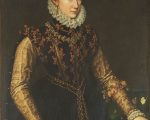
Jane Dormer became one of Queen Mary I’s foremost confidants during the 1550s. Born in 1538 at Eythrope, Buckinghamshire, she was the daughter of Sir William Dormer and Mary Sidney. Upon her mother’s death in 1542 she was brought up by her maternal grandparents. According to Jane’s biography, The Life of Jane Dormer, written by her secretary Henry Clifford) her upbringing shaped her academic career, as she ‘before seven years began to read the Primer or the office of our Blessed Lady, in Latin’. Evidently intelligent, the quote emphasises her traditional Catholic education with reference to the ‘blessed lady’. Her Catholicism, as shall be examined in this article, would later become symbolic of her identity. Similarly, her academic achievements in mastering languages were the result of her grandfather’s fluency, especially in Spanish; he served at the court of Charles V for a period.
[Read More...]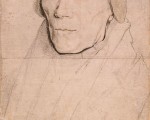
7th May:
1535 – John Fisher, former Bishop of Rochester, was visited by Thomas Cromwell, Master Secretary, and member of the King’s Council. Cromwell read out the “Act of Supremacy” and Fisher refused to acknowledge the King as the supreme head of the Church, saying “The King owre Soveraign Lord is not supreme hedd yn erthe of the Cherche of Englande.” It is alleged that Richard Rich tricked him into saying those words, telling him that the King wished to know his real opinion in secret, but whatever the truth of the matter, Fisher was found guilty of treason and executed on 22nd July 1535.
1536 – Queen Anne Boleyn’s chaplain, William Latymer, was searched by the mayor and jurates of Sandwich on his arrival back in England. He was returning from a business visit to Flanders, a visit he had undertaken on behalf of the Queen. Latymer had often brought Anne religious books back from the Continent, so it was lucky for him that he did not have anything which could have been deemed as heretical in his luggage. Records were made of the books that he was carrying and of those which he was having sent directly to London, but he was allowed to carry on with his journey.
1540 – Death of Sir William Weston, Prior of the Hospital of St John of Jerusalem in England. He died at the priory on the day that the order to dissolve it was passed through the Commons. He was the uncle of Sir Francis Weston, a man executed in 1536 in the coup against Anne Boleyn.

This week’s Sunday puzzle is a general Tudor history quiz. Grab your favourite snack and beverage, make yourself comfortable and let’s get testing your knowledge of Tudor history with this fun quiz.
[Read More...]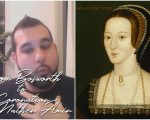
Just to let you know that this month’s live chats will be taking place on 12th and 25th May. Both chats will last one hour and will take place in the Tudor Society chatroom at www.tudorsociety.com/chatroom/ and will last an hour each.
Our informal chat will take place on Saturday 12th May and this month’s topic is Anne Boleyn. This is your chance to share your views on Anne, to ask me questions about her (I have done a bit of research on her!), to ask the views of other members, to share book recommendations, and to just talk Tudor.
[Read More...]
In this week’s Claire Chats video talk, I look at the history of the tradition that we see in towns and villages all around the UK on May Day – morris dancing.
[Read More...]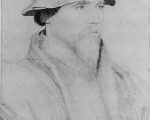
Sir John Gage was born on 28th October 1479 and was the only son of William Gage of Burstow and his wife, Agnes, daughter of Bartholomew Bolney of Bolney in Sussex. Gage was baptised in Burstow, where he was born, but the family later moved to Firle, near Lewes.
In 1499, Gage became a ward of Robert Tate, alderman of London, and in 1502 Gage married Philippa, daughter of Sir Richard Guildford of Cranbrook who was comptroller of the royal household. This marriage match was good for Gage in that it helped him to join the royal household, which he did by becoming an esquire of the body to King Henry VII. He continued in this role after the accession of 17-year-old Henry VIII in 1509.
Gage served as a Justice of the Peace for the counties of Sussex (1514) and Surrey (1528) and by 1522 he had been appointed as deputy to Sir Nicholas Vaux, who was serving as captain of Guînes. This was due to the patronage of Sir William Sandys who was serving as treasurer of Calais. In August 1522, Gage was granted survivorship of the office of comptroller of Calais, because the comptroller, Sir Robert Wotton was ill, and he became comptroller in 1524 on Wotton’s death. He served in the campaigns in France in the 1510s and 1520s and was rewarded with a knighthood in 1525.
[Read More...]
This month we’re thrilled to welcome back Nathen Amin to speak about Henry VII between the Bosworth to his coronation. Nathen has a great way of making history come to life and Henry VII is his topic!
[Read More...]
Thank you to the wonderful group of people we had in our live chat on Friday night. Seamus answered lots of questions about Henry VIII and his health, and also let us know some of the remedies that he had personally tried.
Congratulations also to the winner of a copy of Seamus’ book Pustules, Pestilence and Pain.
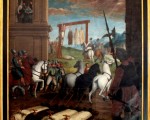
1532 – James Bainham, lawyer and Protestant martyr, was burned at Smithfield.
1536 – Scottish theologian Alexander Alesius witnessed an argument between Queen Anne Boleyn and Henry VIII, and at 11 o’clock that night, the King and Queen’s upcoming visit to Calais was cancelled and arrangements made for the King to journey alone a week later. Also 30th April, court musician and member of the Boleyn circle, Mark Smeaton, was taken to Thomas Cromwell’s house in Stepney and interrogated. Within twenty-four hours, he had confessed to making love three times to the Queen.
1544 – Death of Thomas Audley, Baron Audley of Walden and Lord Chancellor, at his home in Aldgate, London. Audley was Cromwell’s right-hand man in 1536, during the fall of Anne Boleyn, and became even more important after Cromwell’s fall.
1547 – Sir Anthony Denny was made Henry VIII’s Groom of the Stool.
1563 – Death of Henry Stafford, 10th Baron Stafford, at Caus Castle, Shropshire. Stafford was the only legitimate son of Edward Stafford, 3rd Duke of Buckingham, and his wife, Eleanor, daughter of Henry Percy, 4th Earl of Northumberland.
1595 – Death of Thomas Bedwell, mathematician, engineer and keeper of the ordnance store at the Tower of London. He was buried at the Tower, in the Chapel of St Peter ad Vincula. Bedwell’s engineering projects included him supervising the building of Dover harbour, giving advice on the fortification of Portsmouth and working on the River Thames’ defences at Tilbury and Gravesend in 1588, at the time of the Spanish Armada.
1596 – Death of Sir John Puckering, administrator and Speaker of the House of Commons, from apoplexy. Puckering’s other offices included Serjeant-at-Law, Recorder of Warwick, Privy Councillor and Lord Keeper of the Great Seal. In 1587, he was involved in the trial of Elizabeth I’s secretary William Davison, appearing for the Crown. He was buried at Westminster Abbey, in St Paul’s Chapel.
1596 – Death of Thomas Bickley, Bishop of Chichester, at the bishop’s palace in Aldingbourne. He was buried in his cathedral.

Oh well, I can’t tie this into the royal baby news! But one name that was popular in Tudor times was Thomas. There were a lot of Tudor Thomases and this wordsearch is about some of them. Test your knowledge of Tudor Thomases with this fun wordsearch. Good luck and have fun!
[Read More...]
What a treat we have for members this month! Here’s the full version of our massive 96-page May edition of Tudor Life Magazine. This month we’re focusing on the last years of Elizabeth I’s life.
[Read More...]